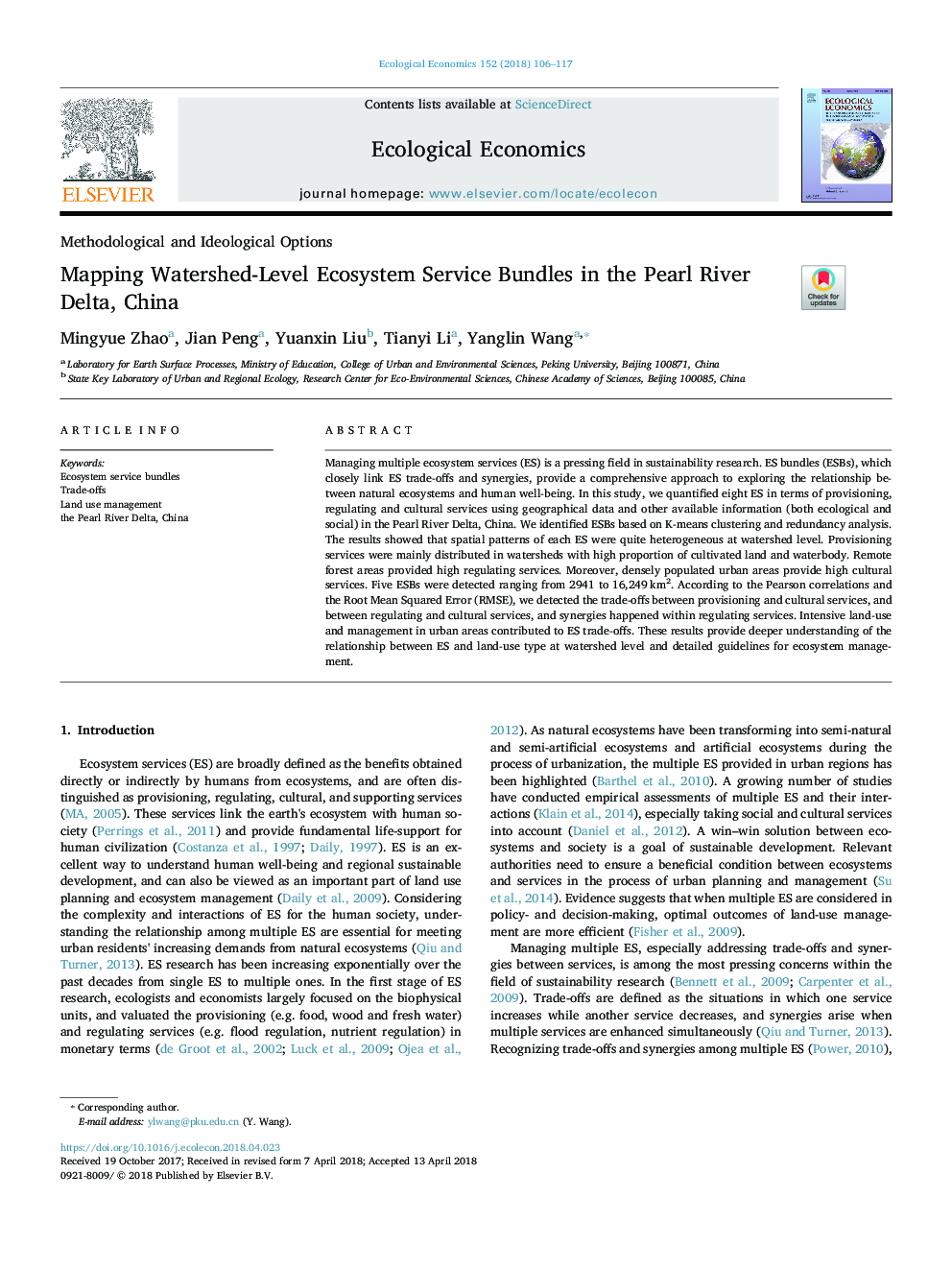| Article ID | Journal | Published Year | Pages | File Type |
|---|---|---|---|---|
| 7343918 | Ecological Economics | 2018 | 12 Pages |
Abstract
Managing multiple ecosystem services (ES) is a pressing field in sustainability research. ES bundles (ESBs), which closely link ES trade-offs and synergies, provide a comprehensive approach to exploring the relationship between natural ecosystems and human well-being. In this study, we quantified eight ES in terms of provisioning, regulating and cultural services using geographical data and other available information (both ecological and social) in the Pearl River Delta, China. We identified ESBs based on K-means clustering and redundancy analysis. The results showed that spatial patterns of each ES were quite heterogeneous at watershed level. Provisioning services were mainly distributed in watersheds with high proportion of cultivated land and waterbody. Remote forest areas provided high regulating services. Moreover, densely populated urban areas provide high cultural services. Five ESBs were detected ranging from 2941 to 16,249â¯km2. According to the Pearson correlations and the Root Mean Squared Error (RMSE), we detected the trade-offs between provisioning and cultural services, and between regulating and cultural services, and synergies happened within regulating services. Intensive land-use and management in urban areas contributed to ES trade-offs. These results provide deeper understanding of the relationship between ES and land-use type at watershed level and detailed guidelines for ecosystem management.
Related Topics
Life Sciences
Agricultural and Biological Sciences
Ecology, Evolution, Behavior and Systematics
Authors
Mingyue Zhao, Jian Peng, Yuanxin Liu, Tianyi Li, Yanglin Wang,
